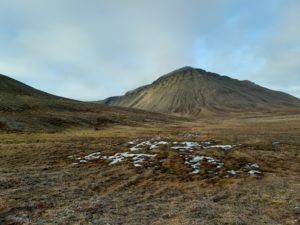 The aim of this project is to investigate to which extent bryophyte-dominated communities insulate the ground better than communities dominated by vascular plants.
The aim of this project is to investigate to which extent bryophyte-dominated communities insulate the ground better than communities dominated by vascular plants.
Project description:
Bryophytes, i.e. mosses and liverworts, dominate the vegetation in wide areas of the Arctic. Especially on Svalbard where dwarf shrubs are scarce, they form a dominant component of the vegetation. With current climate warming ongoing on Svalbard, we expect shifts in vegetation, from moss-dominated to vascular plant-dominated communities as well as species shifts within these groups, in concurrence with studies in other parts in the Arctic. However, as yet we have little knowledge on how the different plant communities on Svalbard affect soil temperature and therefore also permafrost beneath them
Tasks:
The student will join an on-going MSc project. You will assist with field and lab work. Depending on when you join, this can entail several tasks.
In early spring (March/April), we will measure snow depth at the field sites. In summer (June-August) when the snow has disappeared, tasks can vary from measuring active layer depth, organic layer depth, soil moisture and temperature, to taking part in vegetation recording with the point-intercept method, biomass calibrations and polar bear guarding. In the lab, tasks include drying and weighing of biomass. There might also be a need for entering data after the field work is finished. This field work require that the student is able to carry and handle a rifle. Knowledge of Svalbard Flora is a plus
The project involves:
Field work and lab work
Starting date/period:
Possible from end of March to early April and mid June to end of August.
Experience/skills to be acquired:
The student will gain some knowledge on plant and bryophyte species as well as how to conduct abiotic measurements in the field. Furthermore, the student will gain insights into biomass estimations and will learn how the point-Intercept method works. The student will also learn how to operate in a high Arctic environment where polar bears can be present.
Involvement:
Flexible (max 40h). It is recommended to work at least 7 h/day when being in the field.
Interested by this project? Need more info? Contact:
Simone Lang
simone.lang@unis.no
Christina Hess
Christina.hess@unis.no
Project number: 7
